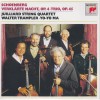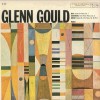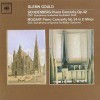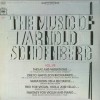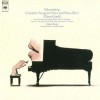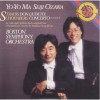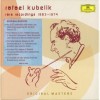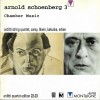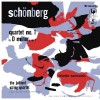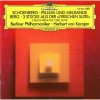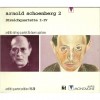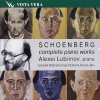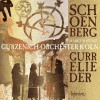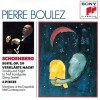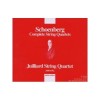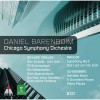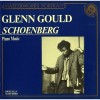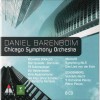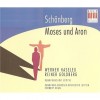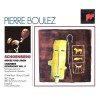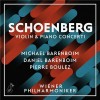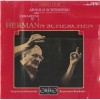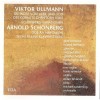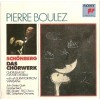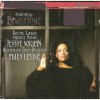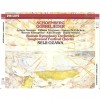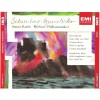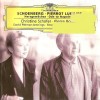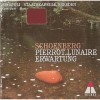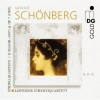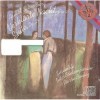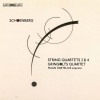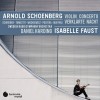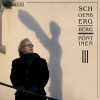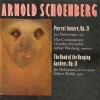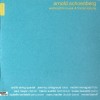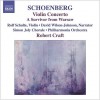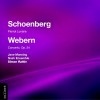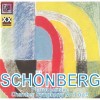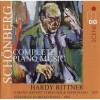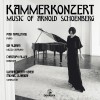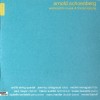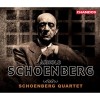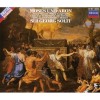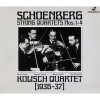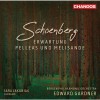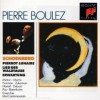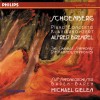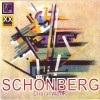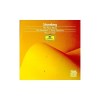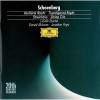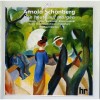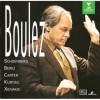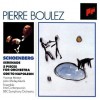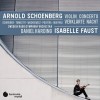传记
Arnold Schoenberg (13 September 1874 – 13 July 1951) was an Austrian and later American composer, associated with the expressionist movement in German poetry and art, and leader of the Second Viennese School. He used the spelling Schönberg until after his move to the United States in 1934 (Steinberg 1995, 463), whereupon he altered it to Schoenberg "in deference to American practice" (Foss 1951, 401), though one writer claims he made the change a year earlier (Ross 2007, 45).
Schoenberg's approach, both in terms of harmony and development, is among the major landmarks of 20th century musical thought; at least three generations of composers in the European and American traditions have consciously extended his thinking or, in some cases, passionately reacted against it. During the rise of the Nazi Party in Austria, his music was labeled, alongside jazz, as degenerate art.
Schoenberg was widely known early in his career for his success in simultaneously extending the traditionally opposed German Romantic styles of Brahms and Wagner. Later, his name would come to personify pioneering innovations in atonality that would become the most polemical feature of 20th-century art music. In the 1920s, Schoenberg developed the twelve-tone technique, a widely influential compositional method of manipulating an ordered series of all twelve notes in the chromatic scale. He also coined the term developing variation, and was the first modern composer to embrace ways of developing motifs without resorting to the dominance of a centralized melodic idea.
Schoenberg was also a painter, an important music theorist, and an influential teacher of composition; his students included Alban Berg, Anton Webern, Hanns Eisler, and later John Cage, Lou Harrison, Earl Kim, and many other prominent musicians. Many of Schoenberg's practices, including the formalization of compositional method, and his habit of openly inviting audiences to think analytically, are echoed in avant-garde musical thought throughout the 20th century. His often polemical views of music history and aesthetics were crucial to many of the 20th century's significant musicologists and critics, including Theodor Adorno, Charles Rosen, and Carl Dahlhaus. His thought also had a considerable influence on the pianists Rudolf Serkin, Artur Schnabel, and Eduard Steuermann, and, later, Glenn Gould.
Schoenberg's archival legacy is collected at the Arnold Schönberg Center in Vienna.
Arnold Schoenberg was born into a lower middle-class Jewish family in the Leopoldstadt district (in earlier times a Jewish ghetto) of Vienna, at "Obere Donaustraße 5". His father Samuel, a native of Bratislava, was a shopkeeper. Although his mother Pauline, a native of Prague, was a piano teacher, Arnold was largely self-taught. He took only counterpoint lessons with the composer Alexander von Zemlinsky, who was to become his first brother-in-law (Beaumont 2000, 87).
In his twenties, Schoenberg earned a living by orchestrating operettas, while composing his own works, such as the string sextet Verklärte Nacht ("Transfigured Night") (1899). He later made an orchestral version of this, which became one of his most popular pieces. Both Richard Strauss and Gustav Mahler recognized Schoenberg's significance as a composer; Strauss when he encountered Schoenberg's Gurre-Lieder, and Mahler after hearing several of Schoenberg's early works.
Strauss turned to a more conservative idiom in his own work after 1909 and at that point dismissed Schoenberg. Mahler adopted him as a protégé and continued to support him even after Schoenberg's style reached a point which Mahler could no longer understand; Mahler worried about who would look after him after his death. Schoenberg, who had initially despised and mocked Mahler's music, was converted by the "thunderbolt" of Mahler's Third Symphony, which he considered a work of genius. Afterward he "spoke of Mahler as a saint" (Stuckenschmidt 1977, 103; Schoenberg 1975, 136).
In 1898 Schoenberg converted to Lutheranism. He would remain Lutheran until 1933.
During the summer of 1908, his wife Mathilde left him for several months for a young Austrian painter, Richard Gerstl. This period marked a distinct change in Schoenberg's work. It was during the absence of his wife that he composed "You lean against a silver-willow" (German: Du lehnest wider eine Silberweide), the thirteenth song in the cycle Das Buch der Hängenden Gärten, Op. 15, based on the collection of the same name by the German mystical poet Stefan George. This was the first composition without any reference at all to a key (Stuckenschmidt 1977, 96). Also in this year, he completed one of his most revolutionary compositions, the String Quartet No. 2, whose first two movements, though chromatic in color, use traditional key signatures, yet whose final two movements, also settings of George, daringly weaken the links with traditional tonality. Both movements end on tonic chords, and the work is not fully non-tonal. Breaking with previous string-quartet practice, it incorporates a soprano vocal line.
During the summer of 1910, Schoenberg wrote his Harmonielehre (Theory of Harmony, Schoenberg 1922), which remains one of the most influential music-theory books. From about 1911, Schönberg belonged to a circle of artists and intellectuals who included Lene Schneider-Kainer, Franz Werfel, Herwarth Walden and the latter's wife, Else Lasker-Schüler.
Another of his most important works from this atonal or pantonal period is the highly influential Pierrot Lunaire, Op. 21, of 1912, a novel cycle of expressionist songs set to a German translation of poems by the Belgian-French poet Albert Giraud. Utilizing the technique of Sprechstimme, or melodramatically spoken recitation, the work pairs a female vocalist with a small ensemble of five musicians. The ensemble, which is now commonly referred to as the Pierrot ensemble, consists of flute (doubling on piccolo), clarinet (doubling on bass clarinet), violin (doubling on viola), violoncello, speaker, and piano.
Wilhelm Bopp, director of the Vienna Conservatory from 1907, wanted a break from the stale environment personified for him by Robert Fuchs and Hermann Grädener. Having considered many candidates, he offered teaching positions to Schoenberg and Franz Schreker in 1912. At the time Schoenberg lived in Berlin. He was not completely cut off from the Vienna Conservatory, having taught a private theory course a year earlier. He seriously considered the offer, but he declined. Writing afterward to Alban Berg, he cited his "aversion to Vienna" as the main reason for his decision, while contemplating that it might have been the wrong one financially, but having made it he felt content. A couple of months later he wrote to Schreker suggesting that it might have been a bad idea for him as well to accept the teaching position (Hailey 1993, 55–57).
World War I brought a crisis in his development. Military service disrupted his life when at the age of 42 he was in the army. He was never able to work uninterrupted or over a period of time, and as a result he left many unfinished works and undeveloped "beginnings". On one occasion, a superior officer demanded to know if he was "this notorious Schoenberg, then"; Schoenberg replied: "Beg to report, sir, yes. Nobody wanted to be, someone had to be, so I let it be me" (Schoenberg 1975, 104) (according to Norman Lebrecht (2001), this is a reference to Schoenberg's apparent "destiny" as the "Emancipator of Dissonance").
Later, Schoenberg was to develop the most influential version of the dodecaphonic (also known as twelve-tone) method of composition, which in French and English was given the alternative name serialism by René Leibowitz and Humphrey Searle in 1947. This technique was taken up by many of his students, who constituted the so-called Second Viennese School. They included Anton Webern, Alban Berg and Hanns Eisler, all of whom were profoundly influenced by Schoenberg. He published a number of books, ranging from his famous Harmonielehre (Theory of Harmony) to Fundamentals of Musical Composition (Schoenberg 1967), many of which are still in print and used by musicians and developing composers.
Schoenberg viewed his development as a natural progression, and he did not deprecate his earlier works when he ventured into serialism. In 1923 he wrote to the Swiss philanthropist Werner Reinhart: "For the present, it matters more to me if people understand my older works ... They are the natural forerunners of my later works, and only those who understand and comprehend these will be able to gain an understanding of the later works that goes beyond a fashionable bare minimum. I do not attach so much importance to being a musical bogey-man as to being a natural continuer of properly-understood good old tradition!" (Stein 1987, 100; quoted in Strimple 2005, 22)
Following the 1924 death of composer Ferruccio Busoni, who had served as Director of a Master Class in Composition at the Prussian Academy of Arts in Berlin, Schoenberg was appointed to this post the next year, but because of health problems was unable to take up his post until 1926. Among his notable students during this period were the composers Roberto Gerhard, Nikos Skalkottas, and Josef Rufer.
Schoenberg continued in his post until the election of Adolf Hitler and the Nazis in 1933. While vacationing in France, he was warned that returning to Germany would be dangerous. Schoenberg formally reclaimed membership in the Jewish religion at a Paris synagogue, then traveled with his family to the United States (Friedrich 1986, 31). His first teaching position in the United States was at the Malkin Conservatory in Boston. He moved to Los Angeles, where he taught at the University of Southern California and the University of California, Los Angeles, both of which later named a music building on their respective campuses Schoenberg Hall (UCLA Department of Music [2008]; University of Southern California Thornton School of Music [2008]). He settled in Brentwood Park, where he befriended fellow composer (and tennis partner) George Gershwin and began teaching at UCLA. He lived there the rest of his life. Composers Leonard Rosenman and George Tremblay studied with Schoenberg at this time.
During this final period, he composed several notable works, including the difficult Violin Concerto, Op. 36 (1934/36), the Kol Nidre, Op. 39, for chorus and orchestra (1938), the Ode to Napoleon Buonaparte, Op. 41 (1942), the haunting Piano Concerto, Op. 42 (1942), and his memorial to the victims of the Holocaust, A Survivor from Warsaw, Op. 46 (1947). He was unable to complete his opera Moses und Aron (1932/33), which was one of the first works of its genre to be written completely using dodecaphonic composition. In 1941, he became a citizen of the United States. During this period, his notable students included John Cage, Lou Harrison, and H. Owen Reed.
Schoenberg experienced triskaidekaphobia (the fear of the number 13), which possibly began in 1908 with the composition of the thirteenth song of the song cycle Das Buch der Hängenden Gärten Op. 15 (Stuckenschmidt 1977, 96). Moses und Aron was originally spelled Moses und Aaron, but when he realised this contained 13 letters, he changed it. His superstitious nature may have triggered his death. According to friend Katia Mann, he feared he would die during a year that was a multiple of 13 (quoted in Lebrecht 1985, 294). He so dreaded his sixty-fifth birthday in 1939 that a friend asked the composer and astrologer Dane Rudhyar to prepare Schoenberg's horoscope. Rudhyar did this and told Schoenberg that the year was dangerous, but not fatal.
But in 1950, on his seventy-sixth birthday, an astrologer wrote Schoenberg a note warning him that the year was a critical one: 7 + 6 = 13 (Nuria Schoenberg-Nono, quoted in Lebrecht 1985, 295). This stunned and depressed the composer, for up to that point he had only been wary of multiples of 13 and never considered adding the digits of his age. On Friday, 13 July 1951, Schoenberg stayed in bed—sick, anxious and depressed. In a letter to Schoenberg's sister Ottilie, dated 4 August 1951, his wife Gertrud reported, "About a quarter to twelve I looked at the clock and said to myself: another quarter of an hour and then the worst is over. Then the doctor called me. Arnold's throat rattled twice, his heart gave a powerful beat and that was the end" (Stuckenschmidt 1977, 521). Gertrud Schoenberg reported the next day in a telegram to her sister-in-law Ottilie that Arnold died at 11:45pm (Stuckenschmidt 1977, 520).
Schoenberg's significant compositions in the repertory of modern art music extend over a period of more than 50 years. Traditionally they are divided into three periods though this division is arguably arbitrary as the music in each of these periods is considerably varied. The idea that his twelve-tone period "represents a stylistically unified body of works is simply not supported by the musical evidence" (Haimo 1990, 4), and important musical characteristics—especially those related to motivic development—transcend these boundaries completely. The first of these periods, 1894–1907, is identified in the legacy of the high-Romantic composers of the late nineteenth century, as well as with "expressionist" movements in poetry and art. The second, 1908–1922, is typified by the abandonment of key centers, a move often described (though not by Schoenberg) as "free atonality". The third, from 1923 onward, commences with Schoenberg's invention of dodecaphonic, or "twelve-tone" compositional method. Schoenberg's most well-known students Hans Eisler, Alban Berg, and Anton Webern, followed Schoenberg faithfully through each of these intellectual and aesthetic transitions, though not without considerable experimentation and variety of approach.
Beginning with songs and string quartets written around the turn of the century, Schoenberg's concerns as a composer positioned him uniquely among his peers, in that his procedures exhibited characteristics of both Brahms and Wagner, who for most contemporary listeners, were considered polar opposites, representing mutually exclusive directions in the legacy of German music. Schoenberg's Six Songs, Op. 3 (1899–1903), for example, exhibit a conservative clarity of tonal organization typical of Brahms and Mahler, reflecting an interest in balanced phrases and an undisturbed hierarchy of key relationships. However, the songs also explore unusually bold incidental chromaticism, and seem to aspire to a Wagnerian "representational" approach to motivic identity. The synthesis of these approaches reaches an apex in his Verklärte Nacht, Op. 4 (1899), a programmatic work for string sextet that develops several distinctive "leitmotif"-like themes, each one eclipsing and subordinating the last. The only motivic elements that persist throughout the work are those that are perpetually dissolved, varied, and re-combined, in a technique, identified primarily in Brahms's music, that Schoenberg called "developing variation". Schoenberg's procedures in the work are organized in two ways simultaneously; at once suggesting a Wagnerian narrative of motivic ideas, as well as a Brahmsian approach to motivic development and tonal cohesion.
Schoenberg's music from 1908 onward experiments in a variety of ways with the absence of traditional keys or tonal centers. His first explicitly atonal piece was the second string quartet, Op. 10, with soprano. The last movement of this piece has no key signature, marking Schoenberg's formal divorce from diatonic harmonies. Other important works of the era include his song cycle Das Buch der Hängenden Gärten, Op. 15 (1908–1909), his Five Orchestral Pieces, Op. 16 (1909), the disturbing Pierrot Lunaire, Op. 21 (1912), as well as his dramatic Erwartung, Op. 17 (1909). The urgency of musical constructions lacking in tonal centers, or traditional dissonance-consonance relationships, however, can be traced as far back as his Kammersymphonie, Op. 9 (1906), a work remarkable for its tonal development of whole-tone and quartal harmony, and its initiation of dynamic and unusual ensemble relationships, involving dramatic interruption and unpredictable instrumental allegiances; many of these features would typify the timbre-oriented chamber music aesthetic of the coming century.
In the early 1920s he worked at evolving a means of order which would enable his musical texture to become simpler and clearer, and this resulted in the "method of composing with twelve tones which are related only with one another" (Schoenberg 1984, 218), in which the twelve pitches of the octave (unrealized compositionally) are regarded as equal, and no one note or tonality is given the emphasis it occupied in classical harmony. He regarded it as the equivalent in music of Albert Einstein's discoveries in physics. Schoenberg announced it characteristically, during a walk with his friend Josef Rufer, when he said, "I have made a discovery which will ensure the supremacy of German music for the next hundred years" (Stuckenschmidt 1977, 277). This period included the Variations for Orchestra, Op. 31 (1928); Piano Pieces, Opp. 33a & b (1931), and the Piano Concerto, Op. 42 (1942). Contrary to his reputation for strictness, Schoenberg's use of the technique varied widely according to the demands of each individual composition. Thus the structure of his unfinished opera Moses und Aron is unlike that of his Fantasy for Violin and Piano, Op. 47 (1949).
Ten features of Schoenberg's mature twelve-tone practice are characteristic, interdependent, and interactive (Haimo 1990, 41):
Hexachordal inversional combinatoriality
Aggregates
Linear set presentation
Partitioning
Isomorphic partitioning
Invariants
Hexachordal levels
Harmony, "consistent with and derived from the properties of the referential set"
Metre, established through "pitch-relational characteristics"
Multidimensional set presentations
Understanding of Schoenberg's twelve-tone work has been difficult to achieve owing in part to the "truly revolutionary nature" of his new system, misinformation disseminated by some early writers about the system's "rules" and "exceptions" which bear "little relation to the most significant features of Schoenberg's music", the composer's secretiveness, and the widespread unavailability of his sketches and manuscripts until the late 1970s. During his life, he was "subjected to a range of criticism and abuse that is shocking even in hindsight" (Haimo 1990, 2–3).
After some understandable early difficulties, Schoenberg began to win public acceptance, with works such as the tone poem Pelleas und Melisande at a Berlin performance in 1907. At the Vienna première of the Gurre-Lieder on 13 February 1913, he received an ovation that lasted a quarter of an hour and culminated with Schoenberg's being presented with a laurel crown (Rosen 1996, 4; Stuckenschmidt 1977, 184). Much of his work, however, was not well received. His Chamber Symphony No. 1 in E major Op. 9, premièred unremarkably in 1907; when it was played again, however, in a 31 March 1913 concert, which also included works by Alban Berg, Anton Webern and Alexander von Zemlinsky, thunderous applause contended with hisses and laughter during Webern's Six Pieces, Op. 6; though Zemlinsky's Four Maeterlinck Songs calmed the audience somewhat (according to a contemporary newspaper report), after Schoenberg's Op. 9 "one could hear the shrill sound of door keys among the violent clapping, and in the second gallery the first fight of the evening began." Later in the concert, during a performance of the Altenberg Lieder by Berg, fighting broke out after Schoenberg interrupted the performance to threaten removal by the police of any troublemakers (Stuckenschmidt 1977, 185). Mahler's Kindertotenlieder, which were to have concluded the concert, had to be canceled after a police officer was called in (Rosen 1996, 5). After this, Schoenberg's music made a break from tonality.
The deteriorating relation between contemporary composers and the public led him to found the Society for Private Musical Performances (Verein für musikalische Privataufführungen in German) in Vienna in 1918. He sought to provide a forum in which modern musical compositions could be carefully prepared and rehearsed, and properly performed under conditions protected from the dictates of fashion and pressures of commerce. From its inception through 1921, when it ended because of economic reasons, the Society presented 353 performances to paid members, sometimes at the rate of one per week. During the first year and a half, Schoenberg did not allow any of his own works to be performed (Rosen 1975, 65). Instead, audiences at the Society's concerts heard difficult contemporary compositions by Scriabin, Debussy, Mahler, Webern, Berg, Reger, and other leading figures of early 20th-century music (Rosen 1996, 66).
Schoenberg's serial technique of composition with twelve notes became one of the most central and polemical issues among American and European musicians during the mid- to late-twentieth century. Beginning in the 1940s and continuing to the present day, composers such as Pierre Boulez, Karlheinz Stockhausen, Luigi Nono and Milton Babbitt have extended Schoenberg's legacy in increasingly radical directions. The major cities in the USA (e.g., Los Angeles, New York, and Boston) have had historically significant performances of Schoenberg's music, with advocates such as Babbitt in New York and the Franco-American conductor-pianist, Jacques-Louis Monod. Schoenberg's students have been influential teachers at major American universities: Leonard Stein at USC, UCLA and CalArts; Richard Hoffmann at Oberlin; Patricia Carpenter at Columbia; and Leon Kirchner and Earl Kim at Harvard). Musicians associated with Schoenberg have had a profound influence upon contemporary music performance practice in the USA (e.g., Louis Krasner, Eugene Lehner and Rudolf Kolisch at the New England Conservatory of Music; Eduard Steuermann and Felix Galimir at the Juilliard School). In Europe, the work of Hans Keller, Luigi Rognoni, and René Leibowitz has had a measurable influence in spreading Schoenberg's musical legacy outside of Germany and Austria.
Schoenberg was not fond of Igor Stravinsky. In 1926 he wrote a poem titled "Der neue Klassizismus" (in which he derogates Neoclassicism and obliquely refers to Stravinsky as "Der kleine Modernsky"), which he used as text for the third of his Drei Satiren, Op. 28 (H. C. Schonberg 1970, 503).
Schoenberg was a painter of considerable ability, whose pictures were considered good enough to exhibit alongside those of Franz Marc and Wassily Kandinsky (Stuckenschmidt 1977, 142). He was interested in Hopalong Cassidy films, which Paul Buhle and David Wagner (2002, v–vii) attribute to the films' left-wing screenwriters—a rather odd claim in light of Schoenberg's statement that he was a "bourgeois" turned monarchist (Stuckenschmidt 1977, 551–52).





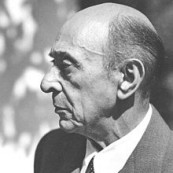

![Russian legends - Gidon Kremer [10 CD]](http://static.classicalm.com/repository/collection-cover/small/273-img1318873589669975.jpg)
![Great European Organs. 53-Keith John [Kallio Church Helsinki]](http://static.classicalm.com/repository/collection-cover/small/945-img1342345508657217.jpg)
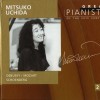


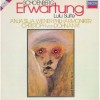
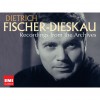
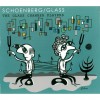
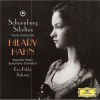
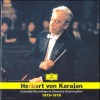
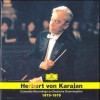
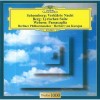
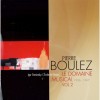
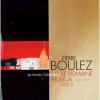
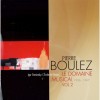
![Rafael Kubelik Rare Recordings 1963-1974 [CD6of8]](http://static.classicalm.com/repository/disk-cover/small/3599-img1404743998540979.jpg)
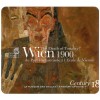
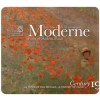
![Anthology of the Royal Concertgebouw Orchestra: Live the Radio Recordings 1960-1970 [CD7]](http://static.classicalm.com/repository/disk-cover/small/3444-img1395222609469047.jpg)
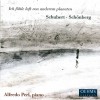
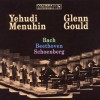
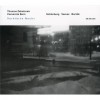
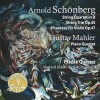
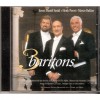
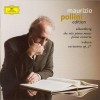
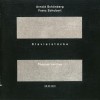
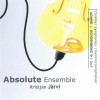
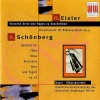
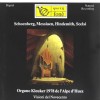
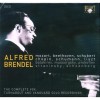
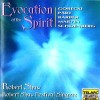
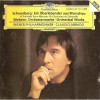
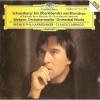
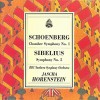
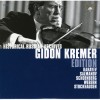
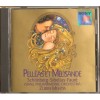
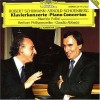
![Arnold Schoenberg, Alban Berg, Anton Webern (Karajan) [CD1of3]](http://static.classicalm.com/repository/disk-cover/small/3651-img1406449579714562.jpg)
![Arnold Schoenberg, Alban Berg, Anton Webern (Karajan) [CD3of3]](http://static.classicalm.com/repository/disk-cover/small/3653-img1406449941148972.jpg)
